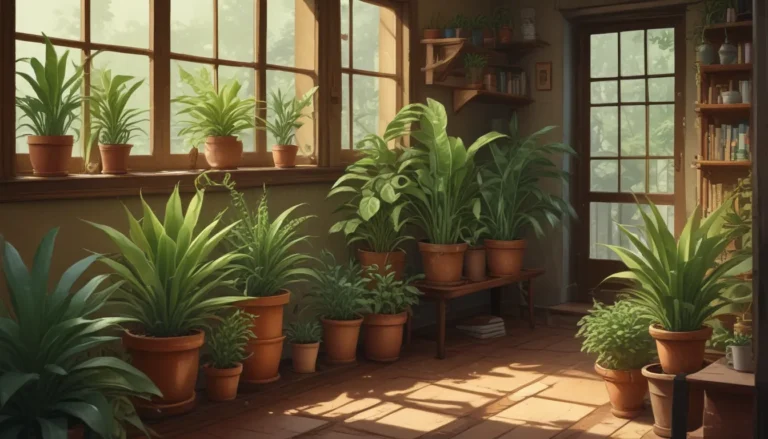Planting and Caring for Lily of the Valley: A Complete Guide

Introduction to Lily of the Valley
The enchanting scent of lily of the valley often captivates passersby with its delicate fragrance. Also known as Convallaria majalis, this herbaceous perennial native to the northern hemisphere is a favorite in many gardens. From its traditional uses in bridal bouquets to its symbolism in various cultures, this plant has a rich history.
The beauty of lily of the valley comes with a caution, though. It is highly toxic and should be handled with care around children and pets. Despite its toxic nature, the allure of this plant is hard to resist.
In this detailed guide, we’ll explore everything you need to know about planting and caring for lily of the valley, from propagation to bloom types, ensuring you can enjoy this captivating plant in your garden safely.
What You’ll Discover
- What is Lily of the Valley? – Propagation Tips – Understanding Bloom Types – Bloom Time Varieties – Planting for Success – How to Keep it in Check – Cultivars to Select – Managing Pests and Disease – Quick Reference Growing Guide
What is Lily of the Valley?
Lily of the valley, scientifically known as Convallaria majalis, is a fragrant flowering herb that thrives in woodland and forested areas in temperate regions. Its bell-shaped white flowers emerge from a cluster of vibrant green leaves, making it a visually striking addition to any garden.
Despite its beauty, lily of the valley is highly toxic, with every part of the plant containing poisonous compounds. This makes it important to exercise caution when handling or planting it, especially around curious children or pets.
A Beautiful Standard
The cultural significance of lily of the valley extends beyond its visual appeal. In Europe, it is a traditional flower for bridal bouquets and is associated with various myths and religious symbolism.
Its delicate appearance and enchanting fragrance have earned it a special place in many hearts around the world, making it a beloved addition to gardens and celebrations alike.
Beautiful Yet Poisonous
It’s essential to be aware of the toxicity of lily of the valley. While its beauty is undeniable, caution must be exercised when handling this plant to prevent accidental ingestion of its poisonous parts.
Propagation Tips
Lily of the valley spreads through rhizomes and stolons, forming large colonies if left unchecked. Understanding its propagation methods can help you manage its growth effectively in your garden.
The plant produces orange-red berries with seeds and requires multiple individual plants for pollination to produce berries. Dividing the plant regularly can help control its spread and maintain a manageable garden space.
Understanding Bloom Types
Lily of the valley produces bell-shaped flowers in clusters on upright stems above its leaves. These fragrant white or pink blooms are aesthetically pleasing and emit a delightful scent that adds charm to any garden.
The flowers typically bloom in early to mid-spring, creating a colorful display that lasts for several weeks. In colder climates, the bloom time may extend into early summer, providing a prolonged period of floral beauty in your garden.
Planting for Success
To ensure the successful growth of lily of the valley in your garden, it’s essential to replicate its preferred growing conditions. This includes providing shade, rich soil, proper drainage, and adequate spacing for the plant to thrive.
Light, water, and nutrition are key factors in maintaining healthy lily of the valley plants. By understanding the plant’s requirements and providing optimal care, you can enjoy a vibrant and fragrant garden filled with these beautiful flowers.
Light
Lily of the valley thrives in shaded areas, making it ideal for planting under trees or in partial shade. While it can tolerate some sunlight, providing morning light and afternoon shade is best for its growth and blooming potential.
Water
Ensuring adequate water supply and good drainage are essential for lily of the valley’s health. Regular watering, especially in sunny locations, can help keep the plant hydrated and flourishing. Mulching can also aid in moisture retention and soil health.
Nutrition
Rich organic compost and mulch provide essential nutrients for lily of the valley to thrive. Avoid over-fertilizing the plant and focus on natural soil enrichment to support its growth and flowering.
How to Keep it in Check
Lily of the valley’s vigorous growth can become challenging to manage without proper care. Consider the following options to control its spread and maintain a tidy garden space:
- Let It Go Wild: Allow the plant to spread freely if space permits, creating a natural carpet of greenery in your garden.
- Keep It Fenced In: Use garden edging to contain lily of the valley in designated areas, preventing it from encroaching on other plants.
- Divide It Regularly: Periodically divide the plant to manage its growth and relocate sections to new areas or share with friends and family.
By implementing these strategies, you can enjoy the beauty of lily of the valley while maintaining a well-organized garden space that enhances your outdoor environment.
Cultivars to Select
When choosing lily of the valley for your garden, consider the available cultivars to find one that suits your preferences. From traditional white blooms to rare pink varieties, there are options to enhance your garden’s visual appeal.
Selecting healthy plants or pips and providing them with proper care during planting will help establish robust lily of the valley specimens in your garden. Soaking the rhizomes before planting can aid in their successful establishment and growth.
Managing Pests and Disease
Lily of the valley is relatively resistant to pests, making it a low-maintenance plant in most gardens. While slugs may occasionally pose a problem, controlling them with beer traps can effectively manage infestations.
Fungal issues are the main threat to lily of the valley, requiring proper watering and treatment with neem oil to prevent and address potential problems. Monitoring the plant for signs of fungal infections and taking prompt action can help preserve its health and longevity in your garden.
Quick Reference Growing Guide
To summarize the key points of planting and caring for lily of the valley, refer to this quick reference guide for essential information on this charming perennial:
- Plant Type: Perennial
- Flower Color: White, Pink (Rare)
- Native to: Temperate Europe and Asia
- Hardiness (USDA Zone): 2-9
- Tolerance: Full Sun in Cooler Climates
- Bloom Time: Spring
- Soil Type: Rich and Moist
- Exposure: Partial to Full Shade
- Soil pH: Slightly Acidic (6.0-6.5)
By following these guidelines, you can cultivate a vibrant garden adorned with the enchanting beauty of lily of the valley, creating a delightful outdoor retreat for yourself and your loved ones.
Conclusion
In conclusion, lily of the valley is a captivating plant that adds beauty and fragrance to any garden. By understanding its unique characteristics, preferred growing conditions, and care requirements, you can cultivate a thriving garden filled with these charming flowers.
From propagating the plant to managing its growth and preventing pests and disease, this guide offers comprehensive information to help you plant and care for lily of the valley successfully. With proper attention and care, you can enjoy the beauty and allure of this enchanting perennial in your outdoor space.
Share your experiences with growing lily of the valley and any tips you have for fellow gardeners in the comments below. Let’s cultivate beautiful gardens and vibrant outdoor spaces together!
For more gardening guides and tips, explore our selection of articles on various plants and flowers to enhance your gardening skills and create stunning landscapes.
As you embark on your lily of the valley gardening journey, remember to prioritize safety, care, and enjoyment in cultivating these beautiful plants. Whether you’re a seasoned gardener or a novice enthusiast, lily of the valley offers a delightful gardening experience that is sure to brighten your outdoor space and elevate your love for nature and beauty in the garden.





